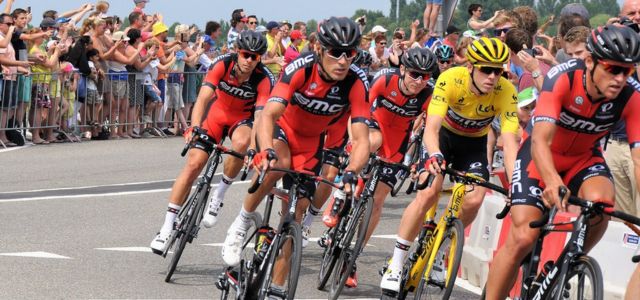At the end of June, the 111th edition of the Tour de France kicked off. June also saw the end of a dispute between Société du Tour de France (STF) and German fitness studio chain FitX Beteiligungs GmbH (FitX) over the well-known TOUR DE FRANCE trademarks (General Court decision of 12 June 2024, case T‑604/22 – STF v. EUIPO).
The General Court of the EU held that the coincidence in the weak element TOUR DE is not sufficient to give rise to a likelihood of confusion or a mental link between TOUR DE FRANCE and TOUR DE X. This element is commonly used in relation to cycling competitions, and the reputation of TOUR DE FRANCE does not extend to TOUR DE on its own.
Background
In 2017, FitX filed a European Union Trademark (EUTM) application for the sign below covering, inter alia, clothing, sports articles, and entertainment and sporting services.
![]()
STF opposed before the European Union Intellectual Property Office (EUIPO), based on EU and national trademarks TOUR DE FRANCE, LE TOUR DE FRANCE, and the sign below and the reputation thereof in relation to the organization of cycling competitions.

In both instances, the EUIPO rejected the opposition. The Second Board of Appeal (Board) held that the contested application neither gives rise to a likelihood of confusion nor was it likely that the use of TOUR DE X would take unfair advantage of, or be detrimental to, the distinctive character or the repute of (LE) TOUR DE FRANCE (Case R 1136/2019-2).
STF brought an action before the General Court against this decision and failed again.
Findings of the General Court
The goods and services were found to be identical or similar, a fact which neither party disputed. The crux of the case revolved around the similarity of the signs, especially their dominant and distinctive elements, and the impact of the coinciding beginnings of TOUR DE.
Firstly, the General Court endorsed the Board’s finding that there is no likelihood of confusion. It argued that the TOUR DE FRANCE word marks do not contain any dominant element, and each element has “very little, if any, distinctive character or was descriptive” in relation to cycling competitions or related goods. Within the LE TOUR DE FRANCE sign, the figurative elements, namely “the representation of the cyclist and the stylization of the letter ‘o’”, are the most distinctive and dominant (§34, 35).
Turning to the contested TOUR DE X sign, the General Court held that the letter X is the most distinctive and dominant element due to its size and stylization (“large, bright orange font”) (§35). Based on the foregoing, the General Court found that the visual and phonetical similarity is low.
It also found that the conceptual similarity is only low. The mere fact that the signs refer to a competition does not render them conceptually similar. TOUR DE FRANCE refers to a specific cycling competition; TOUR DE X, on the other hand, refers neither to a geographical location nor necessarily to cycling (§50).
The General Court then continued to assess the distinctiveness of the earlier rights. While the figurative mark possessed a high degree, the word mark TOUR DE FRANCE was only distinctive to a normal degree as its inherent distinctiveness was weak at best (§53).
The reputation of TOUR DE FRANCE does not extend to the common element of TOUR DE
The General Court also endorsed the Board’s finding that the relevant public will not make a mental link between the signs, despite the “sufficient closeness” between the organization of cycling competitions and the goods and services claimed by the contested application.
Firstly, the court found that STF failed to prove that the reputation of the earlier marks extends to TOUR DE on its own.
It also dismissed STF’s argument that the reputation of TOUR DE FRANCE extended to goods and services other than the organization of cycling competitions. In the notice of opposition, the reputation claim had been limited to the latter only.
Lastly, a higher-than-proven level of reputation would not have had a bearing on the outcome. Even assuming that the degree of reputation was exceptionally high, this would not alter the fact that the element TOUR DE is “very commonly” used in the context of cycling competitions and has, therefore, little, if any, distinctive character (§ 83).

Written by Annemarie Malkmes
Senior Associate, BomhardIP
You may also like…
UEFA partners with Alliance for Creativity and Entertainment to enhance global anti-piracy strategy
October 21, 2025 - The Union of European Football Associations (UEFA) has officially joined the Alliance for...
EUIPO and UANIPIO welcome the integration of Ukraine’s trademarks into TMview
The European Union Intellectual Property Office (EUIPO) and the Ukrainian National Office for Intellectual Property...
Jägermeister succeeds in opposing the EU trademark application Alten Kräuterfrau for alcoholic beverages
Mast-Jägermeister SE filed an opposition on the grounds of Article 8(1)(b) – likelihood of confusion between the signs...
Contact us to write for out Newsletter














